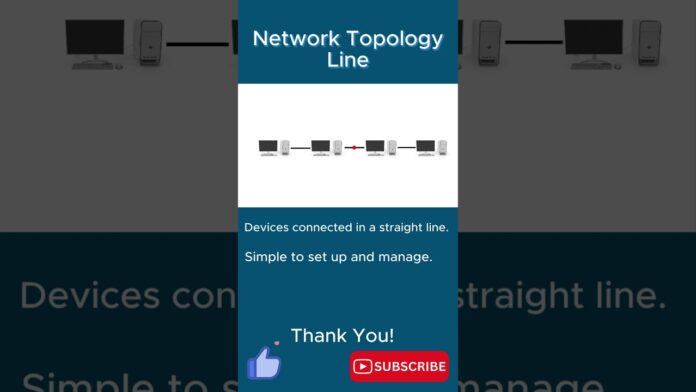In the realm of network architecture, simplicity and efficiency are often key priorities. The line network topology, characterized by its linear arrangement of interconnected devices, exemplifies these principles by offering a straightforward yet effective means of communication.
Understanding the Line Network Topology:
The line network topology, also known as the bus or daisy-chain topology, features a linear arrangement of devices connected end-to-end along a single communication pathway. Each device is linked to the next, forming a continuous chain through which data travels from one end to the other. While traditionally associated with physical cables, such as Ethernet or coaxial cables, line topologies can also exist in wireless configurations, where devices communicate sequentially.
Advantages of Line Topology:
- Simplicity: One of the primary advantages of the line topology is its simplicity. With devices connected in a linear fashion, setup and maintenance are straightforward, requiring minimal configuration or management. This simplicity makes line topologies ideal for small-scale networks or temporary deployments where ease of use is paramount.
- Cost-Effectiveness: Line topologies offer a cost-effective solution for network connectivity, as they require minimal infrastructure and hardware components. With devices connected in series along a single communication pathway, there is no need for additional networking equipment such as switches or routers, reducing deployment costs and complexity.
- Efficient Communication: Data transmission in a line topology follows a linear path from one device to the next, resulting in efficient communication with minimal latency or overhead. This streamlined flow of information ensures reliable and timely data transfer, making line topologies suitable for applications requiring real-time or low-latency communication.
Applications of Line Topology:
- Point-to-Point Connections: Line topologies are commonly used for point-to-point communication scenarios, where two devices need to exchange data directly. This includes applications such as serial communication between devices, serial buses in embedded systems, or direct connections between network endpoints.
- Industrial Control Systems: In industrial environments, line topologies are often employed for connecting sensors, actuators, and control devices in a sequential manner. This allows for efficient data collection, monitoring, and control within manufacturing facilities, process plants, or automation systems.
- Temporary Deployments: Line topologies are well-suited for temporary or ad-hoc network deployments, such as event networks, temporary offices, or construction sites. With minimal infrastructure requirements and easy setup, line topologies provide a quick and cost-effective means of establishing connectivity in temporary environments.
The line network topology offers a simple, efficient, and cost-effective solution for linear connectivity requirements. Whether used for point-to-point communication, industrial control systems, or temporary deployments, line topologies provide reliable data transfer with minimal complexity. By understanding its principles and applications, network administrators can leverage the advantages of line topologies to meet various connectivity needs in diverse environments.
